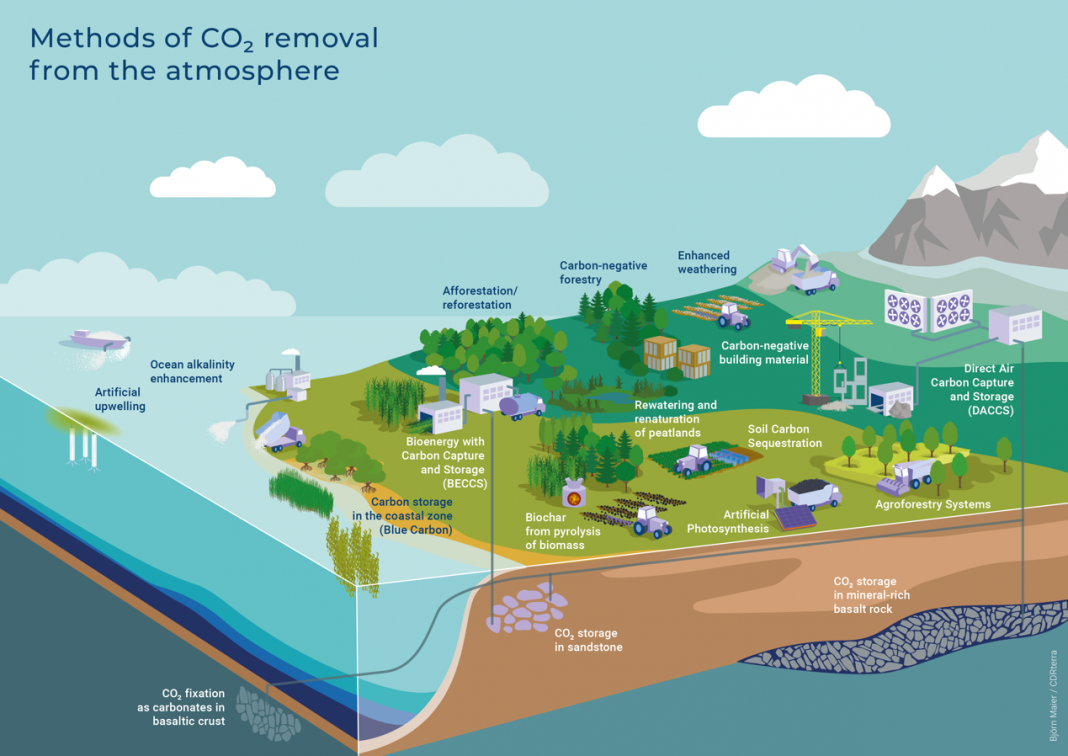The agricultural sector plays a decisive role in tackling climate change. GERICS explores what actors of the agricultural sector think of removing carbon dioxide and what support they need from science
Many countries have the goal of reaching the net-zero emission target. This means any human activity releasing greenhouse gas emissions into the atmosphere must be counterbalanced by an equivalent amount being removed. But how is that supposed to work?
First and foremost, we must reduce our greenhouse gas emissions as much as possible. However, for the emissions that are hard to abate, such as from the cement industry or livestock, removing carbon dioxide (CO2) from the atmosphere has become an essential part of the package reaching the net- zero emissions target.
CO2 removal and agriculture
CO2 removal describes human activities aiming to capture CO2 from the atmosphere and store it away, ideally for as long as possible. The agricultural sector is increasingly moving into the spotlight of becoming an active player in applying such methods. Such methods aim for plants to remove additional CO2 from the atmosphere and store the carbon they contain first in new biomass and then, if possible, long-term in the soil.
This can happen by new planting – for example, in periods where no plants have been cultivated to date e.g. the cultivation of cover crops. Their underground biomass can significantly increase the humus content of the soil. Another option for increasing the photosynthetic and CO2 storage capacity of plants is to establish agroforestry. Agroforestry is the growing of trees and shrubs with crop and livestock farming on the same piece of land. The conversion of carbon contained in additionally produced biomass into carbon-rich material – so-called biochar – counts also as a method for removing additional CO2 from the atmosphere. Biochar applied on fields can have positive impacts on soils.
The question of what experiences actors from the agricultural sector have with CO2 removal methods, how they perceive such methods and what they need to implement them is a rather unexplored field of research. GERICS is currently conducting a case study in Northern Germany as a partner of the consortium CDRSynTra. CDRSynTra is one of ten consortia belonging to the biggest research program CDRterra on land-based CO2 removal methods in Germany funded by the BMBF.
The case study: Removing carbon dioxide
GERICS’ case study focusses on the agricultural sector. The study aims to answer questions such as: how do farmers and agricultural stakeholders experience climate change? Do farmers and agricultural stakeholders know or apply CO2 removal methods, and which barriers have they perceived? What information about CO2 removal or climate change do they lack for applying such methods?
GERICS has conducted 29 interviews, including farmers, farmers’ associations, start-ups producing biochar, and governance bodies such as administrations and state ministries. So far, we found that farmers who are already actively changing their management strategies towards carbon sequestration are well informed.
None of the farmers are motivated by the idea of removing additional CO2 from the atmosphere but rather are interested in sustainable and resilient agricultural systems. Their needs lie in continuous funding and reliable regulations. Farmers’ associations that are rather new to the topic of CO2 removal are eager to learn more about the topic and methods to provide a better knowledge basis for their members.
What does the future hold for CO2 removal The results – expected by mid-2024 – will provide an inventory of knowledge gaps and information needs. This can provide a starting point for the joint development of information prototypes in relation to climate change.
On the other side, information that reveals research gaps will be distributed to the science community. By that, GERICS provides the stakeholders having a say in shaping the upcoming research activities.

This work is licensed under Creative Commons Attribution-NonCommercial-NoDerivatives 4.0 International.


